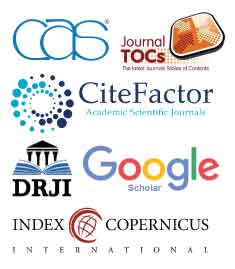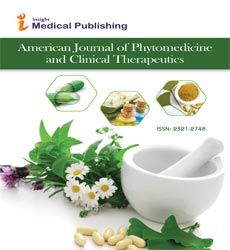ISSN : 2321-2748
American Journal of Phytomedicine and Clinical Therapeutics
Ethnopharmacological Properties of in Traditional Chinese Medicine
Jian Yao*
1Department of Pharmacy, Guangxi Medical University, Nanning, China
- *Corresponding Author:
- Jian Yao,
Department of Pharmacy, Guangxi Medical University, Nanning, China
E-mail: jian.yao@gmail.com
Received date: September 23, 2024, Manuscript No. IPAPCT-24-19893; Editor assigned date: September 26, 2024, PreQC No. IPAPCT-24-19893 (PQ); Reviewed date: October 10, 2024, QC No. IPAPCT-24-19893; Revised date: October 17, 2024, Manuscript No. IPAPCT-24-19893 (R); Published date: October 24, 2024, DOI: 10.36648/2321 2748.12.03.295
Citation: Yao J (2024) Ethnopharmacological Properties of in Traditional Chinese Medicine. Am J Phytomed Clin Ther Vol.12 No.3: 295.
Description
Jigucao, also known as Abrus cantoniensis hance, has long been utilized in ethnopharmacology for its therapeutic benefits, including calming the liver and removing heat. It has also been particularly successful in treating both acute and chronic hepatitis. As a dietetic treatment, ACH is frequently used in soup or herbal tea in southern China, including Guangdong and Guangxi. In the past, ACH was thought to have the ability to calm the liver, remove heat and cleanse it was frequently used to treat inflammation and liver disorders. According to current pharmacological research, ACH has anti-tumor, antiinflammatory, anti-oxidant, immunomodulatory and liver protective properties. Studies have shown that ACH, whether in the form of a single chemical molecule or an extract, has a wide range of pharmacological activity. These were the main sources of its traditional usage, such as liver protection and antiinflammatory properties. It was discovered that the traditional applications of ACH, particularly its hepatoprotective and antiinflammatory properties, are closely linked to current phytochemistry and pharmacodynamic research findings on the substance. The effects of ACH, including its anti-tumor activity, have also been further investigated and expanded by contemporary study. Additionally, all of these initiatives are progressively closing the gap between contemporary pharmacology and classic applications. Overall, more thorough research on the pharmacodynamic mechanism of ACH is still needed and the tactics being used also need to be reinforced.
Hepatoprotective herbal potential
Plant-based natural goods are an essential source of active chemicals with significant assurance for creating novel medications. Nonetheless, a single plant has a wealth of chemical components, including polysaccharides, flavonoids, and alkaloids, the majority of which have similar or several pharmacological effects, including immunomodulation and antiviral properties. Combining traditional usage, phytochemistry and pharmacological research will help us better understand the main molecules of Chinese medicine and how to use them, as well as boost the use and acceptance of Chinese medicine, because the mechanism of effects is complex. The primary distribution areas for Abrus cantoniensis hance (ACH) are Guangdong and Guangxi Provinces in China. The entire plant has been used in Traditional Chinese Medicine (TCM) to treat jaundice, acute or chronic hepatitis and mastitis. It has been shown to have calming, pain-relieving, heat-clearing, and purifying properties. ACH contains a variety of substances that have different biological effects, including polysaccharides, flavonoids, alkaloids and triterpenes. Experiments and clinical research have shown the effectiveness and potential in treating ACH disorders, particularly liver disease. Numerous noteworthy advancements in the investigation of the pharmacological mechanism of ACH's active components have recently been made. Here, we provided a methodical overview of the developments in ACH's pharmacological mechanisms, ethnopharmacology, phytochemistry and some clinical uses. According to ethnopharmacology, ACH is mostly used to treat inflammation and liver conditions including hepatitis. Its active components with hepatoprotective and anti-inflammatory properties, as well as other immunomodulatory functions, have been proven by phytochemistry and pharmacological mechanisms. This holds great promise for the further development of both food and medicine.
Challenges in jigucao
According to the Global Biodiversity Information Facility (GBIS) ACH is mostly grown in southern China, primarily in the provinces of Guangxi and Guangdong. One of the ten genuine Chinese medications in Guangxi Province, ACH is also sold in the United States. Although its seeds are poisonous and cannot be used as medication, it can be dug up year-round. The roots, stems and leaves can all be used as medicine once they have dried, but all of the pods must be removed before usage. The spread of ACH is primarily determined by climatic conditions, and it can be grown in soil that is only slightly acidic. It is mostly seen in regions where the coldest month's average temperature is higher than 10℃. The primary environmental factors influencing its growth and development are temperature and light levels, which means that the dried complete plant of ACH is used to make Jigucao items. ACH and Abrus mollis hance are two commercial Jigucao products that are now available on the market, though they are frequently used interchangeably. According to metabolomics analysis, ACH and A. mollis Hance have quite different flavonoid and phenolic acid metabolites; each has its own distinct metabolites. These results can serve as a point of reference for any future therapeutic applications. The primary cause of market issues is that ACH and A. mollis hance have a similar appearance and a low yield, which makes it difficult difficult to meet the demands of large-scale production. On the other hand, farmers are more inclined to grow A. mollis hance because of its increased production. Some pharmaceutical businesses may employ A. mollis hance as a raw material as a result of the confusion and planting issues caused by the current issues in the herbal medicine market. A stringent drug supervision system would support the quality monitoring of TCM goods and help address the issue of mixed use of medicinal materials in the market.

Open Access Journals
- Aquaculture & Veterinary Science
- Chemistry & Chemical Sciences
- Clinical Sciences
- Engineering
- General Science
- Genetics & Molecular Biology
- Health Care & Nursing
- Immunology & Microbiology
- Materials Science
- Mathematics & Physics
- Medical Sciences
- Neurology & Psychiatry
- Oncology & Cancer Science
- Pharmaceutical Sciences
